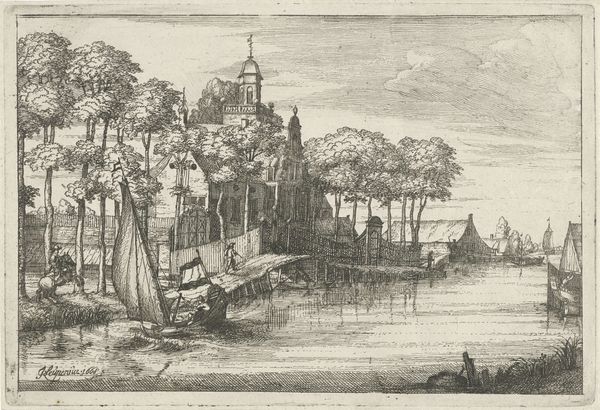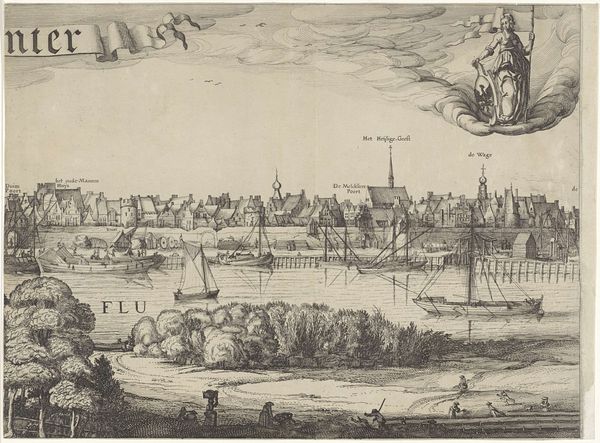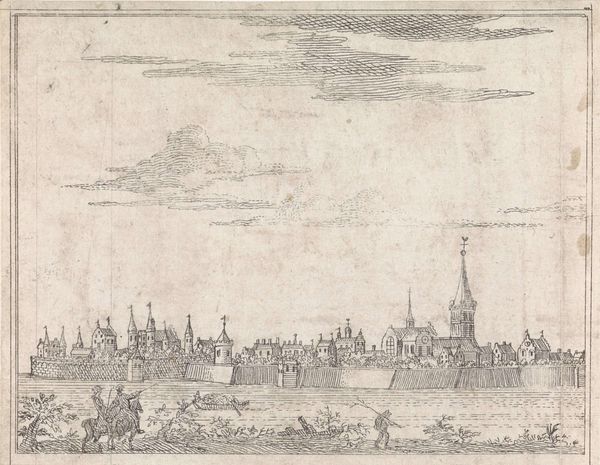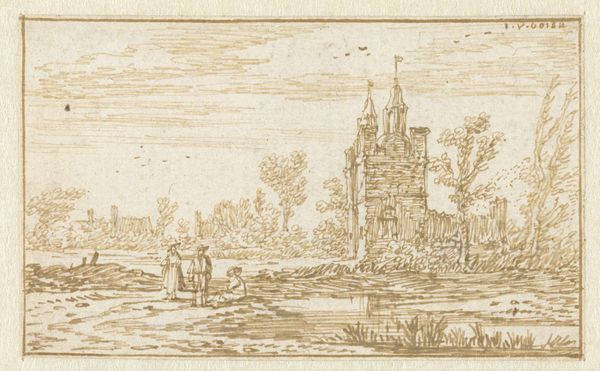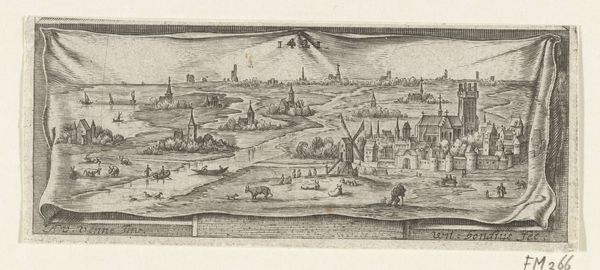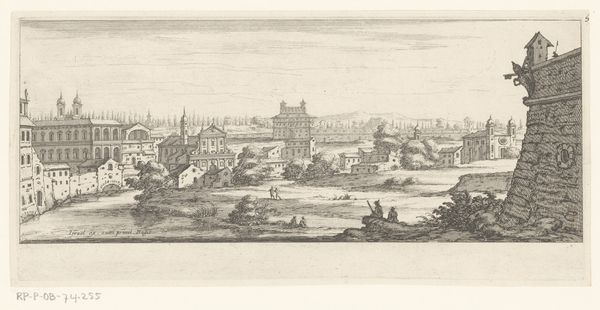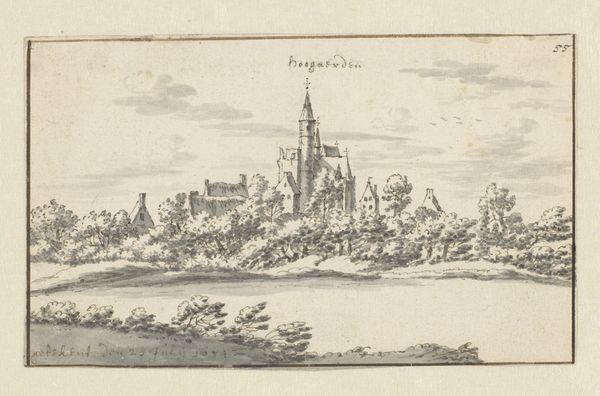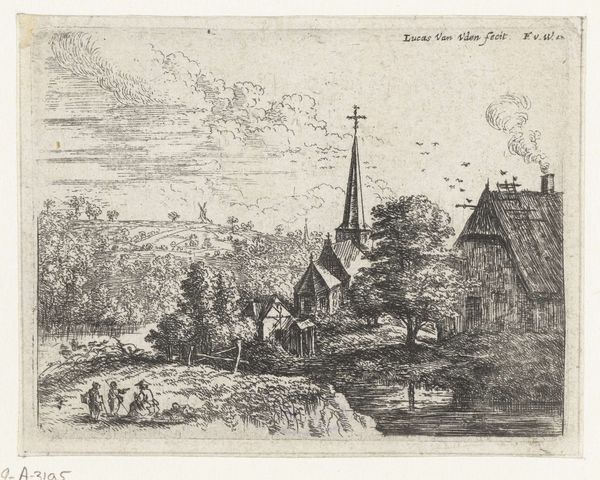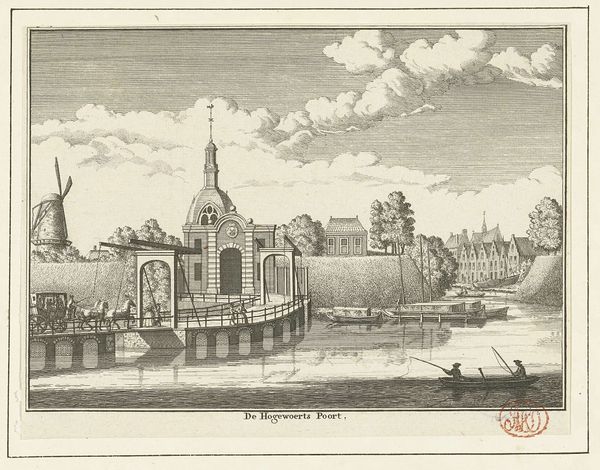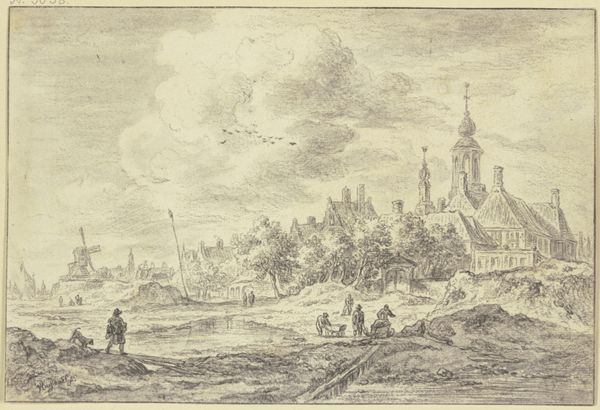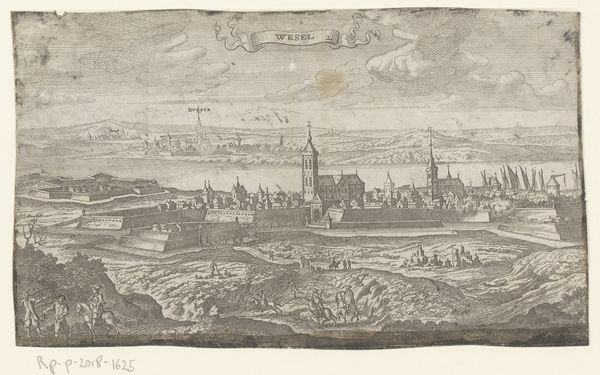
drawing, paper, ink
#
drawing
#
baroque
#
landscape
#
paper
#
ink
#
cityscape
Dimensions: height 62 mm, width 81 mm
Copyright: Rijks Museum: Open Domain
Curator: This ink drawing, titled "Gezicht op Rijnsburg," was created by Abraham Zeeman in 1727. It’s a fascinating cityscape rendered with a delicate, baroque sensibility. Editor: It's immediately striking! The composition, although simple, feels so meticulous. A quiet, almost pastoral scene, even with the suggestion of a bustling town in the background. The way the buildings peek through the trees... Curator: Precisely. Notice the labour involved in creating this drawing – each individual line contributes to a wider composition depicting Rijnsburg. Zeeman, most known for his maritime scenes, meticulously used ink on paper to offer us a view of 18th-century Dutch life. The medium speaks volumes; the relative availability and transportability of ink and paper made this kind of topographical study possible. Editor: Yes, and considering its time, I'm also compelled to consider the people absent from this image. Where are the working-class women of Rijnsburg? Are they implicitly represented in the architectural forms or the domestic spaces that this drawing alludes to? And what stories aren't being told through this very specific lens? Curator: An important intervention, one which allows us to understand what aspects of society this artist privileges. Think about the paper and ink: were these materials accessible to everyone or indicative of a specific socio-economic class? The act of creating such a drawing, a seemingly objective rendering, inherently involves choices about inclusion and exclusion. Editor: Absolutely. It reminds us that even a landscape is a construct, loaded with cultural values and biases. Who commissions such pieces, and for what purpose? Were these images meant for scientific documentation, or more affluent display in private collections? What can we understand from that? Curator: Context is everything. Reflecting on the drawing's materiality allows us to explore questions of class, labour, and even technological advancements of the time. These are vital points in our understanding of art production during the baroque period. Editor: It is striking to imagine Zeeman's image within the tapestry of power, representation, and the ongoing negotiation of whose stories get told—a pertinent dialogue that continues today. Curator: A layered drawing—on its surface a depiction of Rijnsburg, but embedded within, so much more about the mechanisms of its creation and circulation.
Comments
No comments
Be the first to comment and join the conversation on the ultimate creative platform.

